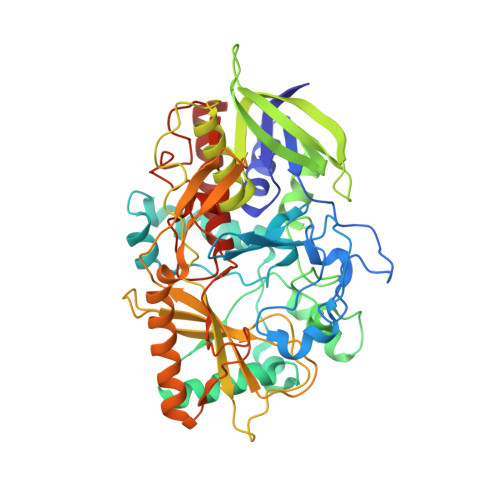Atomic resolution crystallography reveals how changes in pH shape the protein microenvironment
Lyubimov, A.Y., Lario, P.I., Moustafa, I., Vrielink, A.(2006) Nat Chem Biol 2: 259-264
- PubMed: 16604066
- DOI: https://doi.org/10.1038/nchembio784
- Primary Citation of Related Structures:
1N4U, 1N4V, 1N4W, 2GEW - PubMed Abstract:
Hydrogen atoms are a vital component of enzyme structure and function. In recent years, atomic resolution crystallography (>or=1.2 A) has been successfully used to investigate the role of the hydrogen atom in enzymatic catalysis. Here, atomic resolution crystallography was used to study the effect of pH on cholesterol oxidase from Streptomyces sp., a flavoenzyme oxidoreductase. Crystallographic observations of the anionic oxidized flavin cofactor at basic pH are consistent with the UV-visible absorption profile of the enzyme and readily explain the reversible pH-dependent loss of oxidation activity. Furthermore, a hydrogen atom, positioned at an unusually short distance from the main chain carbonyl oxygen of Met122 at high pH, was observed, suggesting a previously unknown mechanism of cofactor stabilization. This study shows how a redox active site responds to changes in the enzyme's environment and how these changes are able to influence the mechanism of enzymatic catalysis.
Organizational Affiliation:
Department of Molecular, Cell and Developmental Biology, 1156 High Street, University of California, Santa Cruz, California 95064, USA.


















